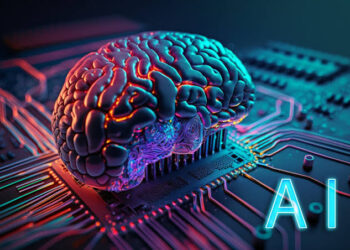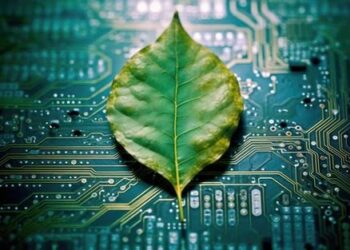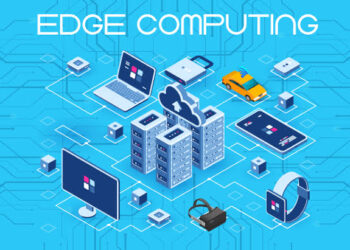The world of technology is constantly evolving, and it can be challenging to keep up with the latest trends and advancements. As we approach 2024, it is essential to understand the key trends that will shape the future of the tech landscape.
These trends include the interplay of intelligence, connectivity, and sustainability. The rise of generative AI and Large Language Models (LLMs) such as OpenAI’s GPT-4 will lead the way in domain-specific applications.

Additionally there will be a focus on sustainability, including sustainable cloud solutions, green software, and eco-friendly devices.
From artificial intelligence to sustainable innovations, the tech landscape is undergoing transformative changes that will redefine industries and our daily lives.
Let’s explore some key trends that are navigating us into the future of the tech world.
Artificial Intelligence (AI) and Machine Learning (ML)

At the forefront of technological evolution is the integration of AI and ML into various facets of our lives. These technologies are not just buzzwords; they are becoming integral components of software, services, and devices.
AI algorithms analyze vast datasets, enabling machines to learn and make decisions with minimal human intervention. From voice assistants to recommendation systems, AI is enhancing user experiences and streamlining processes.
The application of AI is extending to sectors like healthcare, finance, and manufacturing. Predictive analytics and personalized medicine are revolutionizing healthcare, while AI-driven financial models are enhancing investment strategies.
The continuous refinement of machine learning algorithms ensures that AI becomes more adept at understanding complex patterns and delivering insights, paving the way for a smarter, data-driven future.
5G Technology

The rollout of 5G technology is a game-changer that promises faster and more reliable internet connectivity. 5G networks would empower the Internet of Things (IoT) and facilitate seamless communication between devices.
This advancement is crucial for the development of smart cities, autonomous vehicles, and a wide array of connected devices that rely on low latency and high-speed data transfer.
In the business world, 5G enables remote work on an unprecedented scale, with improved video conferencing, augmented reality (AR), and virtual reality (VR) experiences.
The increased bandwidth and reduced latency will open up possibilities for innovative applications, transforming the way we communicate, collaborate, and consume content.
Sustainable Tech Innovations

The tech landscape is pivoting towards sustainability, with a growing emphasis on eco-friendly practices and innovations. From energy-efficient hardware to renewable energy sources, the industry is recognizing the importance of reducing its environmental footprint.
Sustainable tech is not just a moral imperative; it’s also a strategic move for businesses as consumers prioritize eco-conscious products and services.
Renewable energy solutions, such as solar and wind power, are gaining traction to power data centers and reduce the carbon footprint of tech operations. Circular economy principles, emphasizing recycling and reusing materials, are influencing the design and manufacturing of electronic devices.
The integration of sustainability into tech practices will be a key driver of innovation and corporate responsibility.
Augmented and Virtual Reality

Augmented and virtual reality technologies are transcending entertainment and gaming, finding applications in diverse industries. AR and VR are reshaping how we interact with information and the environment around us.
The immersive experiences offered by these technologies have the potential to revolutionize education, healthcare, and remote collaboration.
AR and VR are becoming integral tools for businesses and individuals alike from training simulations in healthcare and manufacturing to virtual tours in real estate.
The convergence of these technologies with AI and 5G will unlock new possibilities, creating a blended reality that seamlessly integrates the digital and physical worlds.
Edge Computing

Edge computing is a distributed computing framework that allows IoT devices to quickly process and act on data at the edge of the network.
Edge computing is emerging as a solution to the growing demand for low-latency, high-performance computing. Instead of relying solely on centralized cloud servers, edge computing brings processing power closer to the data source. This is especially crucial for applications that require real-time responses, such as autonomous vehicles and IoT devices.
Edge computing not only improves the efficiency of data processing but also enhances privacy by keeping sensitive data closer to its origin. As the number of connected devices continues to rise, navigating the future of tech involves leveraging edge computing to optimize performance and deliver seamless user experiences.
Businesses use edge computing to improve the response times of their remote devices and to get richer, more timely insights from device data.
Conclusion
The tech landscape is a dynamic terrain shaped by rapid advancements and transformative trends. Navigating this future means embracing change, staying informed, and harnessing the potential of these trends to shape a better, more connected world.

Artificial intelligence, 5G technology, sustainable innovations, augmented and virtual reality, and edge computing are key pillars defining the trajectory of technology.
Adapting to these trends requires a proactive approach, whether you’re an individual staying updated on the latest tech or a business incorporating these innovations into your strategies.

















